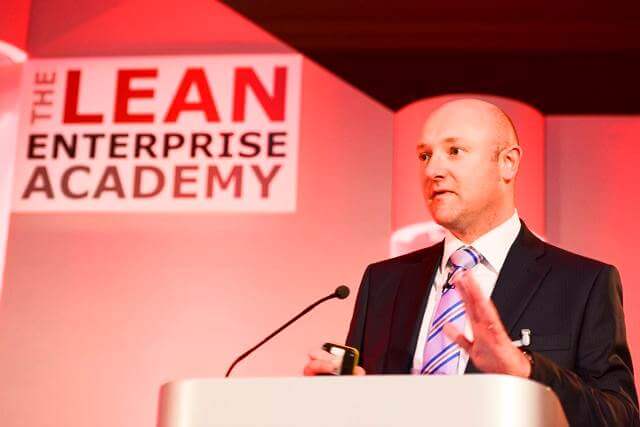In January 2014, John Shook shared the Lean Transformation Framework – the framework that we have been developing to guide transformations with our partner companies, large and small, across a wide range of industries. At our 2014 Lean Summit we explored each of the five areas of the framework, whilst reflecting upon the Halfway story that uses the Lean Transformation Framework.

Transformation is about a marked change – that could be in terms of form, nature, character or appearance. In a business context transformation is about profound change that orientates the organisation in a new direction and takes it to an entirely different level of effectiveness. We’ve learned a lot about implementing Lean since we were told by Jim Womack and Dan Jones in Lean Thinking to find a change agent, get Lean knowledge and seize or create a crisis. For a start, we’ve learned that doing Lean is situational – it starts by understanding the problem you are trying to solve. So perhaps it’s time to introduce a way to think about Lean transformation (in the same way that Dan and Jim taught us the way to “Think” about Lean.)
Transformation is important because it is relevant where ever you are on your Lean journey. If you are just starting out you want to be aware of the elements required – the way to think – about transforming into a Lean organisation. If you are trying to sustain and improve, understanding the performance gaps that you have helps you develop the plans and actions to close them. Whether you are a senior leader, in an improvement team or leader of a front-line team and struggling for traction, understanding these elements is equally important.
Excellent Lean companies try to compress time. If you are making products or providing services then time to market – from concept to launch and time from order to delivery are often critical to success. To do this each step of either of these value streams has to be able to produce and deliver right first time on time – and through successive new launches and continuous improvement – in less time. The best Lean companies employ Lean principles, concepts and tools to highlight problems that prevent or hinder them from delivering right first time on time. They know whether they are behind or ahead and put countermeasures in place to get back on track.
So, here are a couple of challenging questions for you: “Can we apply time compression to Lean transformation? Can we apply “right first time, on time, every time, in less time” to Lean Transformation? Perhaps you’ve never thought about transformation in this way – but I am sure that many of you have thought about the symptoms of not being able to do transformation right first time, on time. “This guy just doesn’t get what we are trying to do.” “How do we speed up the change process?” “My boss just doesn’t get all this Lean stuff.” Or “How do I get my boss engaged?”
 At our 2015 UK Lean Summit we will explore Lean Transformation in more depth – in particular addressing our theme “Developing the Capability to Improve the Work.” I am delighted that John Shook – the architect and chief engineer of our Lean Transformation Framework will join us. John is one of the world experts in Lean transformation with unrivalled and unique experience. We’ve asked John to discuss how we can all use the Lean transformation Framework and to share his insights in terms of coaching and leading a Lean transformation.
At our 2015 UK Lean Summit we will explore Lean Transformation in more depth – in particular addressing our theme “Developing the Capability to Improve the Work.” I am delighted that John Shook – the architect and chief engineer of our Lean Transformation Framework will join us. John is one of the world experts in Lean transformation with unrivalled and unique experience. We’ve asked John to discuss how we can all use the Lean transformation Framework and to share his insights in terms of coaching and leading a Lean transformation.
I do hope you will be able to join us and, in the mean time, I hope you enjoy the videos.